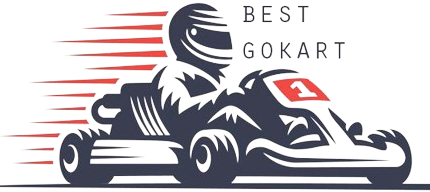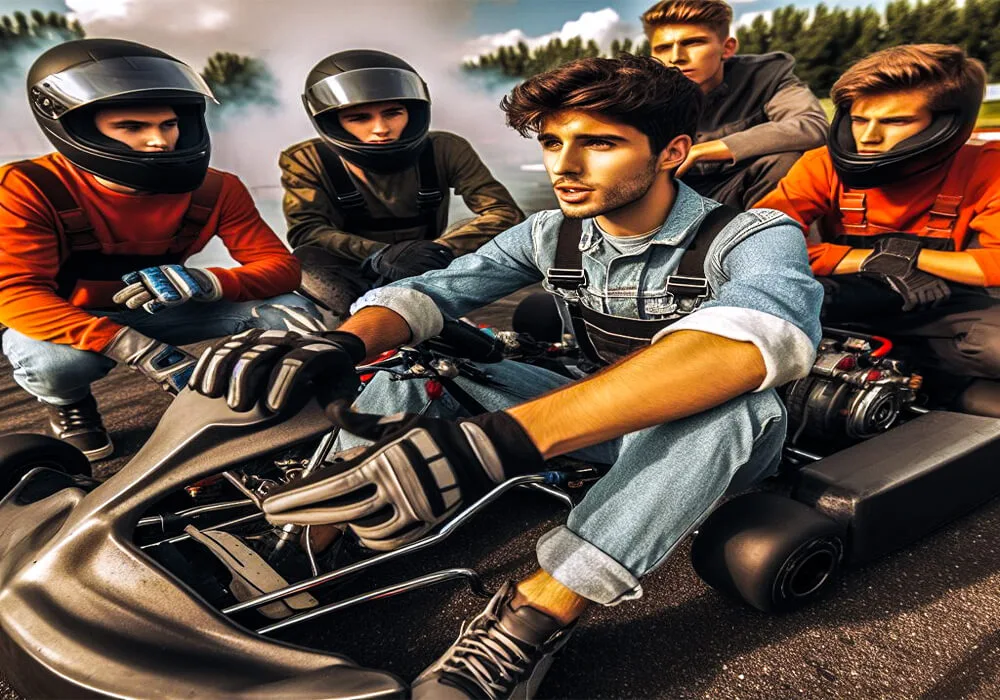How to Drift on a go karts?
Go-kart drifting represents one of the most thrilling aspects of kart racing, combining precision, skill, and adrenaline into an unforgettable experience. While many associate drifting with high-powered sports cars, the technique translates beautifully to go-karts, offering drivers the opportunity to master this dynamic driving style in a more accessible environment.
This comprehensive guide will teach you everything you need to know about go-kart drifting, from the fundamental techniques to advanced strategies that will have you sliding through corners like a professional racer.
What is Go-Kart Drifting?
Drifting is a controlled driving technique where the driver intentionally oversteers, causing the rear wheels to lose traction while maintaining control through a turn. The kart slides sideways through the corner while the driver maintains precise control over the vehicle’s direction and speed.
Unlike traditional cornering methods that prioritize maintaining maximum grip, drifting embraces controlled loss of traction to navigate turns in a spectacular fashion. When executed properly, the kart maintains forward momentum while the rear end swings out, creating the characteristic sideways motion that defines drifting.
The physics behind go-kart drifting involve carefully balancing throttle input, steering angle, and weight transfer to maintain the drift state throughout the corner. This requires understanding how your kart responds to different inputs and developing the muscle memory to make split-second adjustments.
Essential Equipment for Go-Kart Drifting
Choosing the Right Go-Kart
Not all go-karts are suitable for drifting. The ideal drift kart should have sufficient power to break traction while maintaining controllability. Look for karts with:
Engine Power: A minimum of 6.5 horsepower engines work best for recreational drifting, though professional drift karts often use 13-15 horsepower engines. The power-to-weight ratio is crucial for initiating and maintaining drifts.
Chassis Design: A flexible chassis helps with weight transfer during drifting. Avoid overly rigid frames that resist the natural flex needed for smooth drift transitions.
Tire Selection: Harder compound tires reduce grip, making it easier to initiate drifts. Many drift enthusiasts prefer worn tires or specific drift compounds that provide the right balance of grip and slip.
Safety Equipment Requirements
Drifting involves higher risks than standard karting, making proper safety equipment non-negotiable:
- Helmet: A properly fitted helmet meeting safety standards
- Racing suit or protective clothing: Long sleeves and pants to protect against abrasions
- Gloves: Racing gloves improve grip and protect hands
- Closed-toe shoes: Proper footwear with good pedal feel
Fundamental Drifting Techniques
The Basic Drift Initiation
Learning to initiate a drift is the foundation of all drifting techniques. Here’s the step-by-step process:
Approach Setup: Enter the corner at moderate speed, positioning your kart on the outside of the track. Speed management is critical – too fast and you’ll lose control, too slow and you won’t initiate the drift.
Weight Transfer: Shift your body weight toward the inside of the turn while maintaining a relaxed grip on the steering wheel. This weight transfer helps load the inside wheels and prepare for the drift initiation.
Steering Input: Apply quick, decisive steering input toward the corner. The key is to turn the wheel sharply enough to break traction but not so aggressively that you spin out.
Throttle Control: As the rear begins to slide, modulate the throttle to maintain the drift. Too much throttle will cause a spin, while too little will allow the kart to grip up and stop drifting.
Maintaining the Drift
Once you’ve initiated the drift, maintaining it requires constant adjustment and smooth inputs:
Counter-steering: Turn the steering wheel opposite to the direction of the slide to maintain control. This counter-steering must be smooth and proportional to the drift angle.
Throttle Modulation: Use gentle throttle inputs to control the drift angle. More throttle increases the drift angle, while less throttle reduces it.
Body Position: Keep your body relaxed and centered, avoiding sudden movements that could upset the kart’s balance.
Drift Exit Techniques
Properly exiting a drift is as important as initiating it:
Straightening Out: Gradually reduce counter-steering as you approach the corner exit, allowing the kart to naturally straighten.
Throttle Application: Apply smooth, progressive throttle to accelerate out of the corner once the kart is pointing in the desired direction.
Position Recovery: Quickly position the kart for the next section of track, whether that’s another corner or a straight section.
Advanced Drifting Techniques
The Scandinavian Flick
This technique involves a quick steering input opposite to the intended turn direction, followed by a rapid correction toward the corner. The weight transfer from this motion helps initiate the drift.
Execute the Scandinavian flick by steering away from the corner briefly, then quickly turning into the corner as the kart’s weight shifts. This technique works particularly well on tighter corners where traditional drift initiation might be difficult.
Braking Drift
Use the brakes to initiate weight transfer forward, lightening the rear wheels and making them easier to slide. Apply the brakes while turning into the corner, then release as the drift begins.
This technique requires precise timing and brake pressure. Too much braking will slow you down excessively, while too little won’t provide enough weight transfer to initiate the drift.
Power Over Steering
This technique relies purely on throttle input to break traction. Turn into the corner while applying more throttle than the rear wheels can handle, causing them to spin and initiate the drift.
Power over steering works best with higher-powered karts and requires excellent throttle control to avoid spinning out completely.
Track Selection and Conditions
Ideal Track Surfaces
The track surface significantly impacts drifting performance. Smooth asphalt provides consistent sliding characteristics, while rough surfaces can make drifting unpredictable.
Indoor Tracks: Generally offer the most consistent conditions with smooth surfaces and controlled environments. The reduced variables make these ideal for learning.
Outdoor Tracks: Provide more challenging conditions with varying surface textures and weather influences. These tracks often offer more space for extended drifts.
Weather Considerations
Dry Conditions: Offer the most predictable drifting characteristics but require more skill to initiate slides on high-grip surfaces.
Slightly Wet Conditions: Can make drifting easier by reducing overall grip, but also increase the risk of losing control completely.
Cold Weather: Hardens tire compounds, reducing grip and making drifting easier to initiate but harder to control precisely.
Safety Considerations and Best Practices
Pre-Drift Safety Checks
Before attempting any drifting maneuvers, conduct thorough safety checks:
Kart Inspection: Check tire condition, brake function, steering responsiveness, and overall mechanical condition.
Track Assessment: Identify potential hazards, escape routes, and areas with sufficient runoff space.
Personal Readiness: Ensure you’re physically and mentally prepared for the demands of drift driving.
Risk Management
Drifting inherently involves more risk than standard karting. Manage these risks by:
Starting Slowly: Begin with gentle drifts at lower speeds before progressing to more aggressive techniques.
Maintaining Safe Distances: Keep adequate space between yourself and other drivers, barriers, or obstacles.
Recognizing Limits: Understand both your personal limits and your kart’s capabilities, and never exceed them in unsafe conditions.
Common Mistakes to Avoid
Over-correction: Making too aggressive steering inputs when the kart starts to slide, leading to loss of control.
Inconsistent Throttle: Applying throttle erratically instead of smooth, controlled inputs.
Poor Body Position: Tense posture or incorrect weight distribution that interferes with the kart’s natural handling characteristics.
Ignoring Track Conditions: Failing to adjust technique based on surface conditions, weather, or track layout.
Building Your Drifting Skills
Practice Progression
Phase 1: Master basic kart control and smooth driving techniques before attempting to drift.
Phase 2: Practice drift initiation in safe, open areas with plenty of runoff space.
Phase 3: Work on maintaining consistent drift angles and smooth transitions.
Phase 4: Develop advanced techniques and learn to link multiple corners together.
Skill Development Exercises
Cone Courses: Set up cone courses to practice precision and control during drifts.
Figure-8 Patterns: Practice transitioning between left and right drifts using figure-8 layouts.
Speed Control Drills: Work on maintaining consistent speeds throughout drift sequences.
Learning from Others
Observe Experienced Drivers: Watch skilled drift drivers to understand proper technique and timing.
Seek Instruction: Professional instruction can accelerate your learning and help avoid developing bad habits.
Practice Groups: Join or form practice groups with other enthusiasts to share knowledge and techniques.
Maintenance and Care
Tire Management
Drifting accelerates tire wear significantly. Rotate tires regularly and monitor wear patterns to maximize tire life. Consider using dedicated drift tires that are designed to handle the stresses of sliding.
Mechanical Considerations
The increased stresses of drifting affect various kart components:
Engine: Monitor engine temperature and oil levels more frequently, as drifting can increase engine load.
Brakes: Check brake pads and discs regularly, as drift techniques often involve heavy brake use.
Suspension: Inspect suspension components for excessive wear, particularly bushings and joints that experience increased side loads.
FAQs
Can I drift any go-kart?
While most go-karts can technically be drifted, some models might be better suited for the task than others.
What are some signs that I’m oversteering during a drift?
If you feel the rear end of the kart sliding out excessively and losing control, or if you find yourself needing to constantly correct the steering to maintain the drift, it’s likely you’re oversteering. Try easing off the throttle slightly or adjusting your counter-steering input to regain control.
How can I improve my throttle control for drifting?
Practice finding the “sweet spot” with the throttle. Experiment with applying short bursts of throttle followed by brief releases to maintain the drift angle. As you gain experience, you’ll develop a better feel for how much throttle input is needed in different situations.
Are there any resources available to help me learn more about drifting?
Absolutely! There are numerous online resources, instructional videos, and even driving schools dedicated to teaching drifting techniques. Additionally, engaging with experienced drifters and communities can provide valuable insights and tips to further your skills.
Conclusion
Mastering the art of drifting in a go-kart takes dedication, practice, and a healthy dose of fun. By following the steps outlined in this guide, prioritizing safety, and continuously refining your technique, you’ll be well on your way to experiencing the exhilarating thrill of controlled slides and achieving that perfect drift around the corner. Remember, the journey is just as important as the destination, so enjoy the process of learning and pushing your limits while staying safe on the track.

Jason Berry is a passionate enthusiast of all things go-karting. With years of experience in the industry, he has dedicated himself to exploring and uncovering the world of go-karts, from the adrenaline-pumping races to the intricacies of design and performance. Jason’s expertise extends beyond just the tracks; he delves into the mechanics, the technology, and the community that surrounds these thrilling machines. Through his articles and insights, Jason aims to share his knowledge and help fellow enthusiasts make informed decisions about their go-karting adventures. Whether you’re a seasoned racer or a newcomer to the sport, Jason’s expertise and passion are sure to rev up your excitement for the best go-karts on the market.

